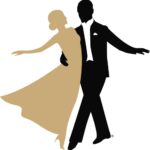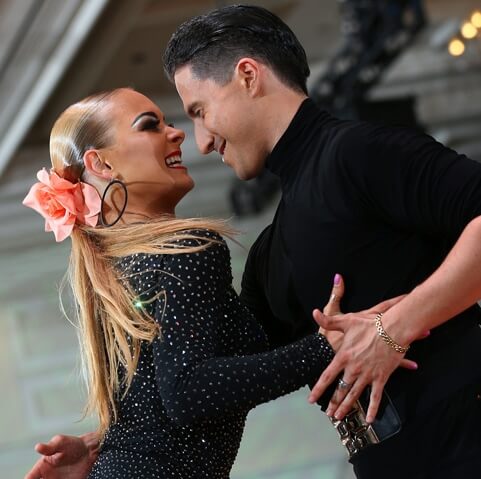In 1977, John Travolta’s snazzy dance moves in Saturday Night Fever indelibly catapulted the Hustle into mainstream culture, but there’s a whole lot more to this famous “Disco” dance than you might think.
Let’s dive into the history of the Hustle to understand its timeless appeal and why it’s still celebrated over 50 years later.
Origins of the Hustle Dance
It’s 1973. If you were a Puerto Rican teenager in the South Bronx looking for a riotous night of fun, you most certainly were at a nightclub dancing an early variation of the Hustle.
In its earliest form, the Hustle (which wasn’t called the Hustle yet), was a six-count line dance featuring simple steps and turns to the rhythmic beat of Latin and disco music.
This new dance captivated onlookers who quickly took notice and started sharing these exciting new dance moves with friends at other clubs, and so on — and so the Hustle craze began.
Evolution & Rise in Popularity
By the mid-’70s, the Hustle had become so popular that it became a signature dance for many clubs. Competitive dancers were eager to put their unique “spins” on the dance, and they did so by adding new “tricks” to the basic six-count pattern. This ultimately meant abbreviating the six-count to “and 1, 2, 3,” which is the count we use today.
During this same period, the Hustle also became a popular couples dance, and Hustle dance competitions flourished. Dancers were eager to add more complicated tricks to impress, including acrobatics! At this time, the Hustle was still being called several different names, depending on who was dancing and their dance style of influence.
For example, do you remember John Travolta’s final dance scene in Saturday Night Fever? He was dancing the Tango Hustle! (According to original Hustle enthusiasts, when Saturday Night Fever came out in 1977, it was simply capitalizing on the Hustle’s already firmly established popularity; the movie simply heightened awareness of the Hustle, making it mainstream.)
Besides the Tango Hustle, other Hustles included:
- The Rope Hustle
- Latin Hustle
- Disco Swing
- Street Hustle
- Swing Hustle
Regional variations included the Detroit Hustle and the New York Hustle. But despite their differences, all these Hustle styles shared the same core elements of smooth, rhythmic, coordinated movements performed to the strong beat of disco or Latin music.
The Hustle Dance Today
Today, people from all over the world still dance the Hustle, and not just to disco music. In the dance’s most basic form, a couple moves in sync doing rock steps, turns, rotations, and spins.
Graceful, rhythmic, and ever-alluring, the modern Hustle is a perfect partner dance for weddings, parties, and competitive dancing. You can find Hustle competitions all over the world, from the annual International Latin Hustle Festival to local Hustle competitions around the country.
This lively partner dance offers something for everyone, taking inspiration from a wide range of dance styles, including smooth ballroom, Mambo, Salsa, and Swing.
Find Dance Lessons at Fred Astaire Dance Studio
Whether you’re a beginner looking to connect with your partner or a competitive dancer honing steps for a competition, Fred Astaire Dance Studio offers a wide range of dance classes tailored to your precise needs.
Upbeat and great fun to dance to, the modern Hustle is more popular than ever because it’s easy to learn and rather addictive once you get the hang of it! After mastering the basic steps, you and your partner will have a blast adding more intricate patterns, from elaborate arm movements to fancy spins and turns.
Our favorite part? Helping you have fun while gaining confidence as a dancer.
Are you ready to Hustle? For the time of your life, discover Hustle dance classes in your area today.


